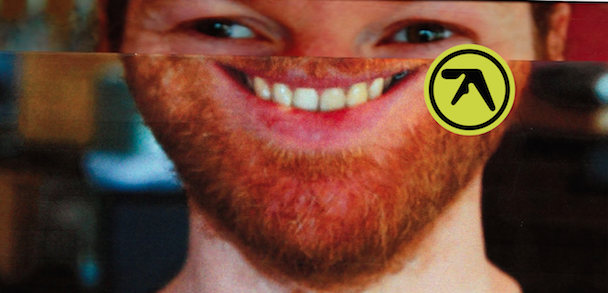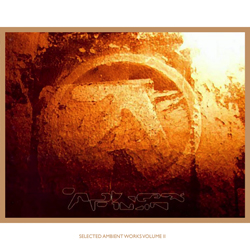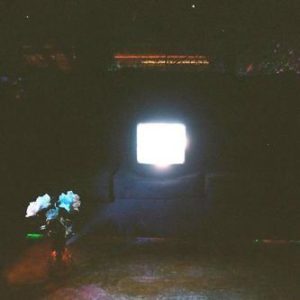10 Essential Ambient Albums

Ambient music has the remarkable distinction of being one of the few genres that makes a minimal impact on first impression, yet can be one of the most devastatingly profound styles after repeated listens. It’s a realm that rewards those for whom texture and soundscape mean more than corporeality, though that isn’t to say they’re mutually exclusive. You listen to ambient music for mood, but there’s no reason why that mood can’t range from pure joy to abject terror, and it very frequently does. A good ambient record isn’t mere background music, it’s something that haunts your dreams and evokes entire landscapes on the strength of subtle shifts in tone. There are stacks upon stacks of great examples, of course, but here are what we consider 10 of the Best Ambient Albums of all time.
 Tangerine Dream – Zeit
Tangerine Dream – Zeit
(1972; Ohr)
Ambient music didn’t begin with Tangerine Dream — not exactly, anyway. One could probably point to minimalism or John Cage as a more accurate point of origin, but Tangerine Dream was one of the first groups to be primarily composing what we now know as “ambient” music, and that’s significant. On their 1972 double-album Zeit, with each track comprising an entire side, Tangerine Dream gave a soundtrack to the vast expanses of space, the unknown, and the terror of that which we don’t quite understand. It’s at times orchestral and grand, at others stark and haunting, and almost invariably stunning in its ability to both lull and evoke a sense of eeriness that more rhythmic pop music generally doesn’t accomplish. Music like this takes a while to fully appreciate, but over time could change your perception entirely. – JT
 Brian Eno – Ambient 1: Music For Airports
Brian Eno – Ambient 1: Music For Airports
(1978; Polydor)
Originally having earned his fame as a purveyor of “sonic treatments” in Roxy Music and releasing some of the most progressive and radical pop albums of the glam-rock era, Brian Eno began to show signs of a stylistic metamorphosis in the more electronically-driven, atmospheric Another Green World and Before and After Science. In 1978, that metamorphosis reached its conclusion with the first of Eno’s “Ambient” series of albums, titled Music For Airports. A soothing, slowly moving collection of four lengthy pieces, Airports as intended was to take on a therapeutic role for the listener, creating a calming force for those afflicted with a fear of flying. Recorded and written in conjunction with Rhett Davies and Robert Wyatt, the four pieces are so soothing and beautiful that it’s conceivable Eno met his objective. Yet even outside of a practical context, Music For Airports is merely such a stunning piece of work that its sounds could soothe the soul under any circumstance. – JT
 The Orb – The Orb’s Adventures Beyond the Ultraworld
The Orb – The Orb’s Adventures Beyond the Ultraworld
(1991; Island)
The Orb were a loose British collective of outsiders to the genre. Alex Paterson and Youth had ties to Killing Joke. Steve Hillage and Kris “Thrash” Weston had hard-rock guitar backgrounds. Even early collaborator Jimmy Cauty was one of the pranksters in The KLF, who would actually reach the ambient racks first with their Gulf Coast travelogue Chill Out. Yet what some might have seen as this crew’s silly wonkery within established electronic music genres was in fact the kind of why-not experimentalism that transformed common work and workers into genius. Paterson led the group’s efforts in Brian Eno record labels and Paul Oakenfold clubs, collecting them on this massive double album. Slowing down insistent rave rhythms, bringing in hints of progressive rock and hallucinogenic sound collage — this was ambient administered the best drugs ever, inducing the labor and birth of modern ambient dub. – AB
 Aphex Twin – Selected Ambient Works Volume II
Aphex Twin – Selected Ambient Works Volume II
(1994; Sire)
Cornwall-based Richard D. James has long been both singularly galvanizing and polarizing within electronica. Aphex Twin is his best-known alter ego, with work ranging from softer spins on traditional techno (“Pulsewidth“) to sounds stressed to their breaking point (“En Trance to Exit”). His lofty claims of using lucid dreaming and an arsenal of homemade instruments to develop his music were tested on this double album. It shares most of its name with a collection of Aphex Twin tracks made from 1985 to 1992, but that’s about it for their common ground. From the track listing on — song order determined by pie chart, with pictures instead of titles — this is as thorny as ambient gets. Where the first SAW focused on hypnotic beats, SAWII is built mostly on mysterious manipulated loops and scary, foggy samples. It’s a listen that challenges and even irritates more than calms, and to be honest, I’ve personally remixed it down to single-LP length. That doesn’t make it any less fascinating or influential… just ask your nearest witch-house act. – AB
 Gas – Pop
Gas – Pop
(2000; Mille Plateaux)
Wolfgang Voigt has made a lot of different types of music under different names — minimal techno as Studio 1 and as half of Burger/Ink, acid as Mike Ink, experimental electronic stuff under his own name — yet it’s his ambient work as Gas that has produced some of the most profoundly stunning music in his broad discography. His last album under that name, 2000’s Pop, isn’t a pop album by any stretch of the word. It has a subtle rhythmic quality, and his techno expertise is apparent in a subliminal kind of way (the fourth track — all of them untitled, by the way — even has a hypnotic pulse a la The Field). Still, this is a work of atmosphere rather than of beats or movement. It’s vast and engulfing. It’s outstanding. – JT
 Fennesz – Endless Summer
Fennesz – Endless Summer
(2001; Editions Mego)
Christian Fennesz has a history of changing his aesthetic approach from release to release, his noisier glitch beginnings eventually giving way to more haunting textures. The meeting place between these poles, Endless Summer, found a harmonious bridge between the click and whir of glitch electronica and gentle ambience, with a little bit of exotica thrown in for color. While Fennesz’s version of an Endless Summer bears no resemblance to that as idealized by the Beach Boys, it’s still an attractive ideal, hypnotic clicks and buzzes mingling with gentle acoustic guitar plucks and plinks of vibraphone. Squint really hard and you can even see waves crashing on the shore. – JT
 Stars of the Lid – The Tired Sounds of Stars of the Lid
Stars of the Lid – The Tired Sounds of Stars of the Lid
(2001; Kranky)
A drone-based collective like Stars of the Lid is often an all-or-nothing proposition. Where many ambient artists create music based around waves, pulses, noise or merely gentle melodies, Stars of the Lid specialize in low, humming drones. That their tracks are so minimal is but one obstacle to fully grasping what they do; that they have a tendency to release music in two-hour sets is another. But with music so serene and beautiful in its understatement, their soft hums could keep going forever and that would be just fine. The Tired Sounds Of… is essentially 18 different shades and hues from a similar palette, each subtle variation bringing with it a new phase of majesty and tranquility. For some, it may come across as merely “boring”; for those willing to soak in its sonic textures, it’s heavenly. – JT
 Tim Hecker – Harmony in Ultraviolet
Tim Hecker – Harmony in Ultraviolet
(2006; Kranky)
Whether making soundscapes inspired by South American fishermen or an album centered around decaying sounds, Tim Hecker manages to elicit a highly emotional resonance in every abstract pursuit. His fourth album, Harmony In Ultraviolet, while not necessarily the most concept-based outing of Hecker’s career, is nonetheless the most cohesive and rewarding piece of work he has created. Its drones, squeals, gentle arpeggios and crashing waves of static reveal a sonic organism that behaves much like an industrialized city. It’s bustling yet lonely, dense yet seemingly boundless, and each track balances elements of thick atmospheric fog and machines pushed to their physical limits. It’s not total chaos, just restless enough to make each single second worth the listener’s rapt attention. – JT
 Emeralds – Does It Look Like I’m Here?
Emeralds – Does It Look Like I’m Here?
(2010; Editions Mego)
Arriving after a seemingly countless flood of unofficial releases, CD-Rs, cassettes and other assorted material, Emeralds’ Does It Look Like I’m Here? is the culmination of three amazing artists finding perfect harmony. The Ohio-based trio doesn’t make pure mood music so much as cosmic electronica, rhythmic and space-age, but never oppressive or beat driven. Elements of kosmiche and Terry Riley’s pioneering minimalism style play a large part in the interstellar atmospheres of Emeralds’ work, but so do Mark McGuire’s stunning guitar leads, which pull their music from abstract ambience into something more melodic and human. Be it a pulsing, climactic track like “Candy Shoppe” or a melancholy lullaby like “Now You See Me,” Emeralds’ take on ambient is one of feeling rather than of detachment. – JT

Oneohtrix Point Never – Replica
(2011; Software/Mexican Summer)
On his sixth release as Oneohtrix Point Never, Daniel Lopatin (half of Ford & Lopatin) built his atmosphere from the unlikeliest of sources: plunderphonics. Replica came primarily from old television commercials; Lopatin layered and repeated unrecognizable microsamples, then made them fight with other inputs in a manner that would make Matthew Herbert and Richie Hawtin proud. It means this record is probably the least “ambient” of any on this list. It can swaddle a listener in a prickly buzz or tuned drone, but more often than not that will give way to (or interfere with) firmer rhythmic footing. Replica therefore rests comfortably in the widely applied chillwave genre. Many of the songs have ideas or narratives to share and require actual grooves to convey them. This is a statement release for people curious to see if ambience could be used in an almost conversational manner, not as Alpha and Omega. – AB

